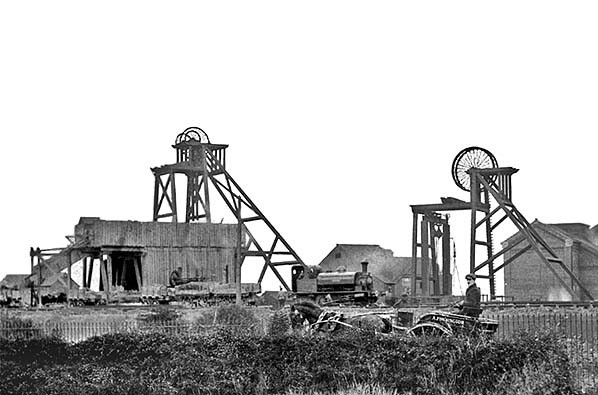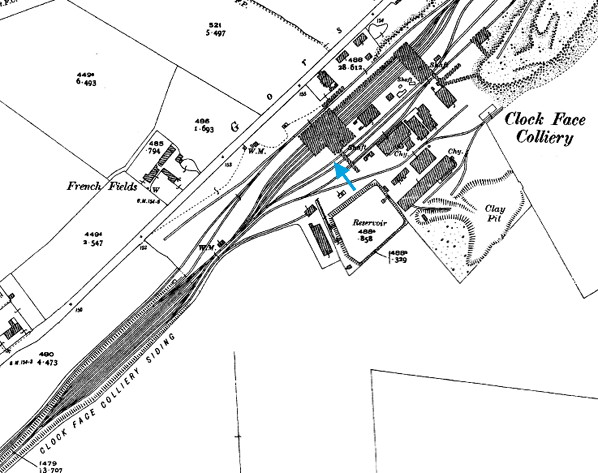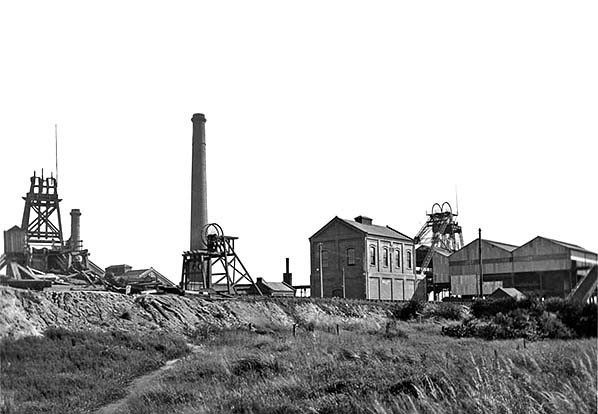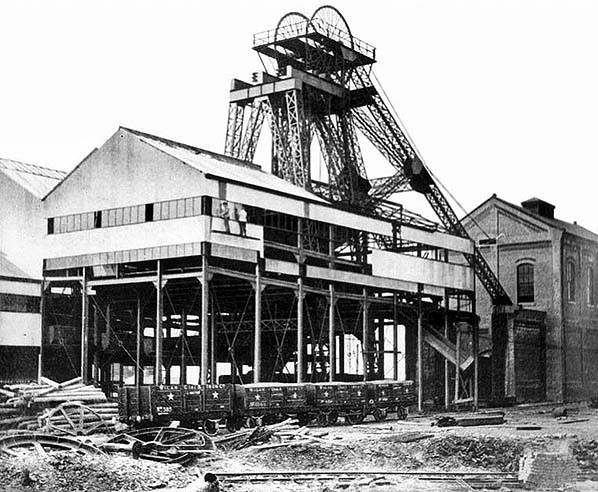Notes: A passenger service for workmen only was operated to Clock Face Colliery from St Helens Shaw Street from just after the Great War until c1930.
The sinking of a coal mine at Clock Face by Bold Hall Estates Ltd started in June 1896, and under an Agreement of 22 September 1896 with the LNWR a railway was constructed from the mine to the St Helens and Widnes line (former St Helens & Runcorn Gap Railway) where it made a connection just to the south of Clock Face station. After sinking 500ft, problems with water forced the work on the mine to be abandoned. The men were paid off on 17 March 1900, and the unfinished mine became derelict.
The Clock Face mine was taken over by the Wigan Coal & Iron Company towards the end of 1902. The new owners, using new technology, were able to overcome the water problems and production started in 1908. A revised Agreement for a connection with the LNWR was signed on 19 May 1905. The Clock Face Colliery branch was ¾-mile long and connected with the LNWR by means of a triangle which allowed trains to run either north to St Helens or south to Widnes.
Clustered around the triangle were sidings for the exchange of traffic between the colliery and the main line. East of the triangle the line crossed Clock Face Road on an overbridge before running in a north-easterly direction to the colliery. Between the east side of the road and the colliery were numerous sidings.
To work the branch the Wigan Coal & Iron Company acquired, along with the pit, a four-coupled saddle tank locomotive called ‘Crosfield’, built by the Vulcan Foundry at Newton-le-Willows for the Bold Hall Estates Ltd in 1897. Within a few years ‘Crosfield’ was joined by six-coupled saddle tanks.
When the passenger trains were introduced on the Clock Face Colliery branch it is likely that they worked up to a point close to the pit head. At other collieries with workmen’s services simple platforms were provided, but it is not known if Clock Face was provided with one. The workmen’s trains operated from St Helens Shaw Street and called at Peasley Cross and Sutton Oak stations. A train for day shift workers left St Helens at 5.50am Mondays to Fridays and at 5.00am on Saturdays. The night shift train departed St Helens at 10.00pm. The day shift men arrived back in St Helens at 3.15pm Mondays to Thursdays, 3.35pm on Fridays and at 12.47pm on Saturdays. The night shift trains arrived back at St Helens at 7.10am Mondays to Fridays and at 6.15am on Saturdays. The trains consisted of two portions, one for Clock Face Colliery and one for Sutton Manor. Upon arrival at Clock Face the train, hauled by an LNWR locomotive, stopped on the down line clear of the points leading to the colliery. A Clock Face Colliery engine then attached itself to the rear portion of the train and hauled it to the pit head. A Sutton Manor locomotive then backed onto the remaining portion and hauled it to Sutton Manor. In the reverse direction the Clock Face engine hauled the train to a point just outside the LNWR boundary, detached and went into a siding. The LNWR engine then backed onto the train, drew it forward onto the main line, and then propelled over a crossover to pick up the Sutton Manor portion.
Clock Face Colliery was taken over by the Wigan Coal Corporation Ltd on its formation on 1 August 1930, and it became part of the No. 3 (St Helens) Area of the National Coal Board on 1 January 1947.
As early as October 1947 proposals were being made to close Clock Face Colliery and to work the coal face from Sutton Manor, as the washery at Clock Face was in a bad state of repair. It was closed and coal was taken to Sutton Manor for preparation, hauled by NCB locomotives that crossed what had become the British Railways line. Latterly the NCB locomotives were based only at Sutton Manor. The Clock Face Colliery branch closed early in 1957, and the Agreements regarding connections with the main line were terminated on 31 August 1957; it is likely that the connections were taken out shortly after. Clock Face Colliery ceased production of coal in March 1966.
Sources:
- Industrial Railways of St Helens, Widnes and Warrington - Part 2 St Helens Coalfield and the Sandfields - C H A Townley & J A Peden - Industrial Railway Society 2002
- The St Helens Railway, Its Rivals and Successors – J M Tolston – The Oakwood Press 1982
- The Widnes to St Helens Railway in Halton 1833 - 1982 - P T Wright - Halton Borough Council 2008
See Also: Sutton Oak, Peasley Cross, St Helens 1st, St Helens 2nd
& St Helens 3rd
To see very rare photographs from inside the Clock Face Colliery click here. |





.jpg)
.jpg)

 Home Page
Home Page